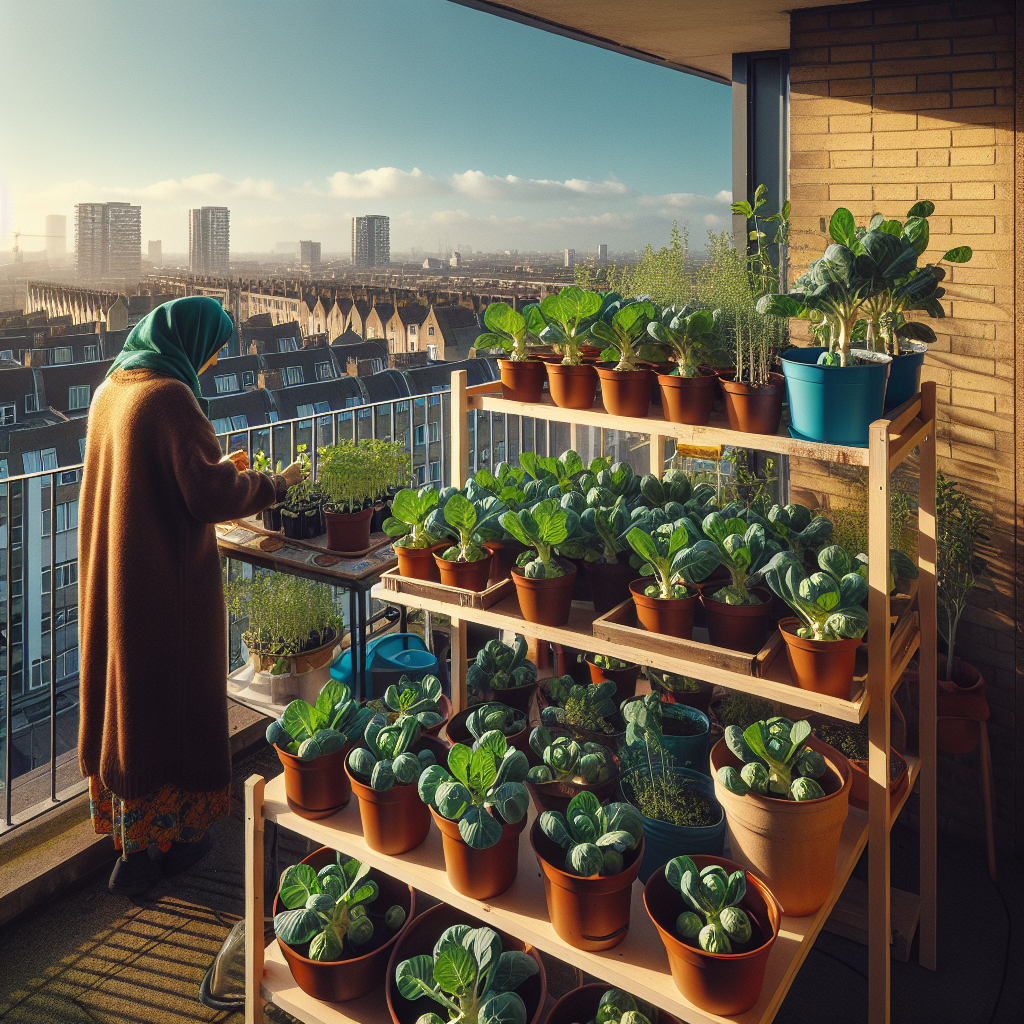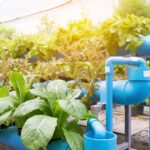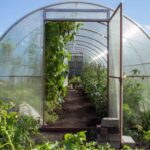
Key Takeaways
- Brussels sprouts thrive in full sun and fertile soil, but urban conditions require creative solutions.
- Testing soil and amending with organic matter can significantly improve urban soil quality.
- Container gardening with the right soil mix is ideal for space-limited urban areas.
- Maximizing sunlight exposure through strategic placement and reflective surfaces is crucial.
- Survival Essentials offers a variety of seeds perfect for urban gardening challenges.
Thriving Brussels Sprouts in the Urban Jungle
Welcome to the world of urban gardening, where every inch of space is an opportunity to grow fresh, nutritious food. Brussels sprouts, with their compact growth habit and high yields, make an excellent choice for city dwellers. But let’s be real, urban environments come with their own set of challenges—limited space, less-than-ideal soil, and buildings casting long shadows. Fear not, for with a bit of know-how, you can overcome these obstacles and enjoy a bountiful harvest of Brussels sprouts.
Essential Conditions for Brussels Sprout Growth
First things first, Brussels sprouts love the sun—six hours or more a day, to be precise. They also crave rich, well-draining soil that’s kept consistently moist. These mini cabbages prefer cooler temperatures, with most of their growth happening when the thermometer reads around 60 degrees Fahrenheit. Remember, though, they’re quite hardy and can withstand a range of weather conditions once established.
Identifying the Unique Challenges of Urban Settings
Urban gardening is like a puzzle. You’ve got to fit your green dreams into the concrete reality of the city. The biggest challenges? Soil that’s often compacted, contaminated, or just plain concrete, and tall buildings that love to hog the sunlight. But, where there’s a will, there’s a way, and that’s what we’re here to figure out together.
Now, let’s dig into the details and get those Brussels sprouts growing!
Soil Secrets for Sprout Success
Testing and Amending Urban Soil
Soil in the city can be tricky. It might be lacking in nutrients, or worse, contain contaminants. That’s why testing your soil is step one. You can grab a simple test kit from your local garden center or online. It’ll tell you what your soil has and what it’s missing. Once you’ve got the lowdown, it’s time to amend.
Most importantly, you want to add organic matter. This could be compost, aged manure, or even your own kitchen scraps turned into gold through composting. This stuff is like a vitamin boost for your soil, adding nutrients and improving texture. It also helps with water retention and drainage—yes, both at the same time. Magic!
Choosing the Right Soil Mix for Container Gardening
If your outdoor space is more concrete jungle than fertile field, containers are your best friend. But don’t just fill any old pot with dirt from the ground. You’ll want a special mix that’s designed for container gardening. This usually means a blend of peat moss, perlite, and either garden soil or compost. It’s light, it’s fluffy, and it’s got everything your Brussels sprouts need to thrive in a pot.
Organic Matter and Compost: Nutrient-Rich Enhancements
Besides that, adding organic matter to your containers is still a must. Mix in some compost before planting, and top-dress with more as the season goes on. This will keep your Brussels sprouts happy and well-fed. And since we’re all about urban sustainability, making your own compost is a great way to recycle your kitchen waste and save some money.
With these soil strategies in hand, you’re well on your way to overcoming one of the biggest hurdles in urban gardening. But wait, there’s more! Stay tuned for part two where we’ll dive into how to get enough sun for your shade-dwelling sprouts, and introduce you to some handy gadgets that’ll make urban gardening a breeze.
Maximizing Limited Sunlight for Photosynthesis
Even in the densest urban environments, there’s sunlight to be found. Brussels sprouts are sun-lovers, and photosynthesis is their game. Your goal is to scout out those precious rays. Rooftops, balconies, or any little spot that gets consistent sunlight is gold. And if you’re surrounded by tall buildings, timing is everything. Track where and when the sun hits your space, and place your plants there.
But it’s not just about finding the sun; it’s about making the most of it. Pruning your Brussels sprouts to remove lower leaves can help light reach the developing sprouts. Also, choosing reflective containers or placing reflective materials like aluminum foil or white fabric around your plants can bounce some extra light their way.
Creative Plant Positioning and Reflective Surfaces
Getting creative with plant positioning can turn a shady nook into a sunbathed haven. Think vertically—using wall-mounted planters or trellises to elevate your Brussels sprouts can help them catch more light. And don’t forget the power of reflective surfaces. A strategically placed mirror can redirect sunlight, giving your plants a much-needed boost.
Supplemental Grow Lights: When Natural Light Isn’t Enough
Example: Imagine you live in a ground-floor apartment where sunlight is a rare visitor. Don’t despair—supplemental grow lights can imitate natural sunlight and keep your Brussels sprouts growing strong. Just a simple LED grow light setup can make a world of difference for your indoor garden.
Grow lights are a game-changer for urban gardeners. They come in various shapes and sizes, from panels to bulbs, and can fit almost any space. When shopping for grow lights, look for full-spectrum options that mimic natural sunlight. And remember, timing is crucial—use a timer to simulate the natural rise and fall of the sun.
With the right light setup, you can grow Brussels sprouts even in windowless rooms. Just make sure to give your plants some “nighttime” too, as they need rest just like we do. About 14-16 hours of light per day should do the trick, with 8-10 hours of darkness.
Now that we’ve shed some light on sunlight solutions, let’s tool up with some gadgets that’ll make urban gardening not just possible, but pleasurable.
Urban Gardening Gizmos and Gadgets
Urban gardening might not have the rustic charm of a countryside plot, but it has its own high-tech appeal. There are gadgets galore designed to make city gardening easier and more productive. From self-watering containers that take the guesswork out of hydration to compact compost bins that fit under your sink, the right tools can make all the difference.
Must-Have Tools for the Urban Brussels Sprout Gardener
Every urban gardener’s toolkit should include a few essentials. A sturdy trowel for planting and potting, a pair of sharp shears for pruning, and a watering can with a long spout for reaching into tight spaces. And let’s not forget a good pair of gloves to keep your hands clean and protected.
Resources for Soil Health: Test Kits and Organic Fertilizers
Your soil is the foundation of your garden, so keep it healthy. Soil test kits are invaluable for knowing what your soil needs. And when it comes to fertilizers, organic is the way to go. They release nutrients slowly, improving your soil health over time, and they’re better for the environment, too.
Survival Essentials: Discover the Best Seeds for Urban Gardens
Starting with high-quality seeds can make all the difference in your garden’s success. Survival Essentials offers a wide range of seeds that are perfect for urban gardening. These seeds are selected for their resilience and ability to thrive in challenging conditions. Check out their collection and find the best fit for your urban space.
Harvesting and Enjoying Your Urban Bounty
After all the care you’ve put into growing your Brussels sprouts, the moment of harvest is a sweet victory. But how do you know when it’s time to pick those little green gems?
Signs Your Brussels Sprouts Are Ready to Harvest
Brussels sprouts are ready to harvest when they are firm, green, and about the size of a large marble. Start from the bottom of the stalk and work your way up, as the lower sprouts mature first. A gentle twist is usually enough to pop them off the stalk.
Post-Harvest Storage Tips for Freshness
To keep your Brussels sprouts fresh after harvesting, store them in the refrigerator in a container or plastic bag. They can last several weeks when kept cool and dry. For long-term storage, you can also blanch and freeze them.
Simple and Healthy Brussels Sprout Recipes
Brussels sprouts are not only a joy to grow but also to eat. Roasted with a bit of olive oil and sea salt, they transform into a crispy, caramelized treat. Or try sautéing them with garlic and bacon for a savory side dish. The possibilities are endless, and the freshness of homegrown sprouts makes every recipe better.
Simple and Healthy Brussels Sprout Recipes
After nurturing your Brussels sprouts to maturity, it’s time to enjoy the fruits of your labor. These little green powerhouses are not just nutritious but also versatile in the kitchen. For a quick and healthy dish, toss halved sprouts with olive oil, salt, and pepper, then roast them until golden and crispy. They can be transformed into a gourmet meal with a drizzle of balsamic glaze or sprinkled with Parmesan cheese straight out of the oven.
Expanding Your Urban Garden
- Explore vertical gardening to maximize space.
- Integrate companion plants that deter pests and enrich the soil.
- Experiment with different varieties of plants for a diverse urban garden.
Once you’ve mastered the art of growing Brussels sprouts, why not expand your urban garden? Vertical gardening is a space-saving solution that can dramatically increase your growing area. Utilize trellises, hanging baskets, or even upcycled pallets to grow upwards. This not only saves space but also adds an aesthetic element to your urban oasis.
Another way to enhance your garden’s productivity is by practicing companion planting. This involves growing plants together that benefit each other by deterring pests, attracting beneficial insects, or providing shade and support. For instance, planting marigolds among your Brussels sprouts can help repel aphids and other pests.
Beyond Brussels sprouts, consider cultivating a variety of vegetables and herbs. This not only creates a more resilient garden ecosystem but also provides you with a wider array of fresh produce to enjoy. From cherry tomatoes to basil, the options for your urban garden are limitless.
Companion Planting: What to Grow Alongside Brussels Sprouts
Companion planting is a time-tested method to enhance the health and yield of your garden. Brussels sprouts, being part of the brassica family, pair well with aromatic herbs like dill and mint, which can help repel pests. Other great companions include onions, garlic, and chives, which can deter common pests and improve overall plant health.
Moving Beyond Brussels: Easy Vegetables for Urban Gardeners
If you’re looking to diversify your urban garden, consider easy-to-grow vegetables like lettuce, radishes, and spinach. These crops can be grown in smaller containers and require less sunlight than Brussels sprouts, making them perfect for balconies or window sills with limited sun exposure.
Frequently Asked Questions
What Are the Best Varieties of Brussels Sprouts for Urban Gardening?
When selecting Brussels sprouts for your urban garden, look for dwarf or compact varieties that are well-suited for container growing. Varieties like ‘Falstaff’ and ‘Rubine’ not only have a smaller footprint but also offer a pop of color with their purple-hued sprouts. ‘Dagan’ and ‘Jade Cross’ are also popular choices for their disease resistance and high yields.
How Often Should I Water My Brussels Sprouts in Containers?
Container-grown Brussels sprouts require consistent moisture. Check the soil daily, and if the top inch is dry, it’s time to water. During hot weather, you may need to water once or even twice a day. Always ensure your containers have adequate drainage to prevent waterlogging, which can lead to root rot.
Can I Grow Brussels Sprouts Indoors Year-Round?
Yes, with the right setup, you can grow Brussels sprouts indoors throughout the year. Choose a spot that receives at least six hours of sunlight or supplement with grow lights. Maintain a consistent temperature around 60-65 degrees Fahrenheit, and use a high-quality potting mix to ensure your indoor sprouts thrive.
What Are the Most Common Pests for Brussels Sprouts, and How Do I Deal with Them?
Common pests for Brussels sprouts include aphids, cabbage worms, and cabbage loopers. To manage these pests, encourage beneficial insects like ladybugs and lacewings that prey on aphids. For cabbage worms and loopers, handpicking or using organic Bacillus thuringiensis (Bt) can be effective. Regularly inspecting your plants and practicing good garden hygiene can also help prevent pest infestations.
How Do I Know If My Soil Is Adequate for Growing Brussels Sprouts?
To assess soil adequacy, start with a soil test to determine pH and nutrient levels. Brussels sprouts prefer a pH between 6.0 and 7.0 and soil rich in nitrogen and potassium. Amend your soil based on test results, and ensure it’s well-draining to support healthy growth. Adding organic matter like compost can also improve soil structure and fertility.
With these strategies and tips in your gardening toolkit, you’re well-equipped to tackle the unique challenges of urban Brussels sprout gardening. Overcoming soil and sun hurdles is not only possible but can also be a rewarding and sustainable way to bring fresh, homegrown produce to your table. So roll up your sleeves, get planting, and enjoy the journey of urban gardening!






